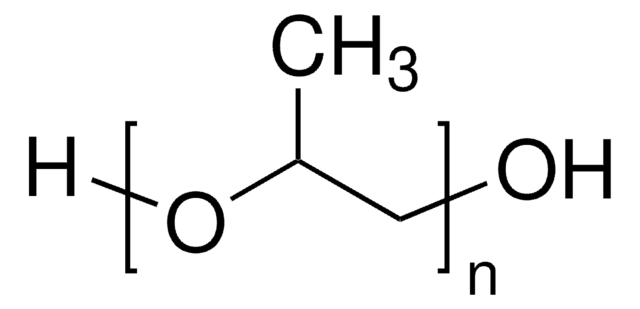435430
Poly(ethylene glycol)-block-poly(propylene glycol)-block-poly(ethylene glycol)
average Mn ~2,800
Synonym(s):
Pluronic® L-81, PEG-PPG-PEG
About This Item
Recommended Products
vapor density
>1 (vs air)
vapor pressure
<0.3 mmHg ( 20 °C)
form
viscous liquid
mol wt
average Mn ~2,800
composition
PEG, 10 wt. %
refractive index
n20/D 1.454
viscosity
475 cP(25 °C, Brookfield)(lit.)
transition temp
softening point −37 °C
cloud point 20 °C (1 wt. % aqueous solution)
density
1.018 g/mL at 25 °C
HLB
1.0 - 7.0
InChI
1S/C3H6O.C2H4O/c1-3-2-4-3;1-2-3-1/h3H,2H2,1H3;1-2H2
InChI key
RVGRUAULSDPKGF-UHFFFAOYSA-N
Looking for similar products? Visit Product Comparison Guide
General description
Application
Features and Benefits
Physical form
Legal Information
Storage Class Code
10 - Combustible liquids
WGK
WGK 3
Flash Point(F)
Not applicable
Flash Point(C)
Not applicable
Personal Protective Equipment
Choose from one of the most recent versions:
Certificates of Analysis (COA)
Don't see the Right Version?
If you require a particular version, you can look up a specific certificate by the Lot or Batch number.
Already Own This Product?
Find documentation for the products that you have recently purchased in the Document Library.
Customers Also Viewed
Articles
Mespoporous materials, also known as mesoporous molecular sieves, are a class of 3D-nanostructures with well-defined mesoscale (2–50 nm diameter) pores and surface areas up to 1000 m2/g
Our team of scientists has experience in all areas of research including Life Science, Material Science, Chemical Synthesis, Chromatography, Analytical and many others.
Contact Technical Service






